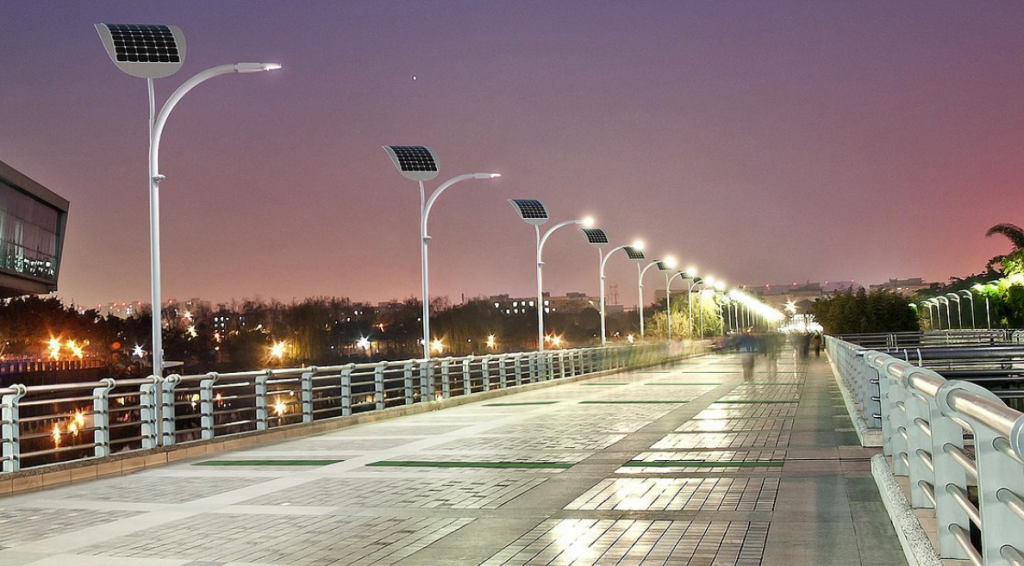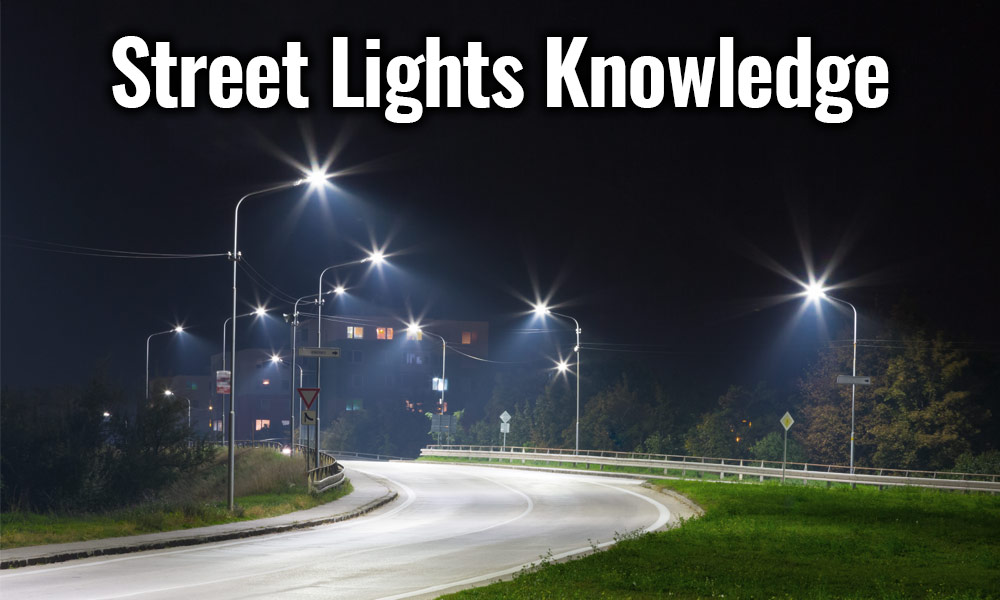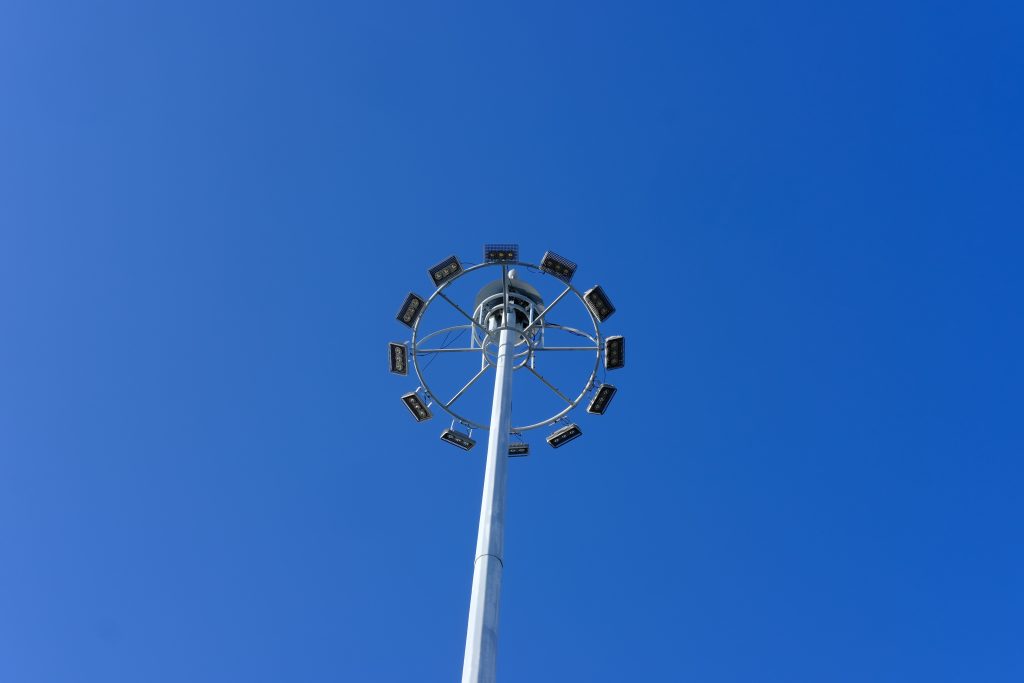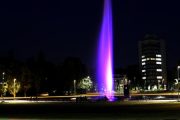The basic design principle of street lamp installation height
- Before installing a street light, you must determine the purpose of installing the street light, for example, whether its purpose is mainly lighting or landscape. After confirming, you can choose whether to install street lights or courtyard lights. Generally, street lights are more than 5 meters, and courtyard lights are about 3 meters, which directly determines the height of the street lights.
- The location of street lights must be determined. For example, the installation height required for rural roads, county-level roads, provincial and national roads, etc. is different, and it is also determined by the width of the road. For example, for a road with a width of 5 meters, a 5-meter-high light pole needs to be installed, and a 10-meter-wide light pole needs to be installed with an 8-meter light pole. The wider the road, the higher the height requirements for the light pole.
- Choose the height of the light pole according to the density of the road passing vehicles and the type of passing vehicles. For example, on roads where there are mostly large vehicles, it is appropriate to install high-point street lights. Low-point street lights can be installed on roads that hardly pass through large vehicles.
- Install solar street lights, and the height must be determined according to the surrounding trees. The principle is to ensure good lighting so that solar panels can better absorb light energy. If the tree is low, the height of the light pole can be higher than the tree.
- The lighting method affects the height of street lights. There are three lighting methods for street lights, namely single-sided lighting, symmetrical lighting on both sides, and staggered lighting on both sides.
details as follows:
The ratio of single-side lights is 1:1, such as the road width is 6 meters and the height of 6 meters is enough.
The symmetrical installation ratio on both sides is 1:0.5, such as the road width is 10 meters, and the installation height is 5 meters.
The ratio of double-sided staggered installation of lights is 1:0.7, such as a road width of 10 meters and a height of 7 meters.
Conventional lighting height
- The height of conventional lighting is usually below 15m, and it is installed regularly and continuously at a certain interval. It is generally installed on one side, two sides or the middle separation belt of the road. When lighting, keep the lamp holder perpendicular to the ground, so that most of the emitted light source can be directed toward the road.
- High pole lighting height
The height of the high pole lighting is usually equal to or greater than 20m, which is a lighting method for large-area lighting. Generally installed at intersections, or at the central turntable position, up to 20 lamps are installed on a light pole, which can illuminate each intersection.
- Illumination height of half-height pole
The height of the half-height pole lighting is usually 15-20m, and it is generally installed on a relatively wide road surface, and it is rarely used in the construction of ordinary county roads.
- Height of courtyard lamp
The height of the courtyard lamp is generally about 3 meters. The specific height can be determined according to the size of the courtyard, but under normal circumstances it will not exceed 10 meters.
How to determine the spacing of street light poles
The distance between street lights is determined according to the nature of the road, such as factory roads, country roads, and urban roads. The power of street lights is 30W, 60W, 120W, 150W. The width of the road surface and the height of the street light pole determine the distance between the street lights. Under normal circumstances, the distance between street lights on urban roads is between 25 meters and 50 meters. If it is installed landscape lights, garden lights and other small street lights, when the light source is not very bright, the distance can be slightly shortened, and the distance can be about 20 meters. The specific situation should be based on customer needs or design needs to determine the size of the spacing.
So this data is formulated according to the needs of customers. Then we will give customers a good opinion if we are on the spot, because it is our honor for you to choose Tachyon street lights, and sincerely caring for customers has always been our service tenet.
The road lamp should be 0.6-1m out of the cliff, the elevation angle on the horizontal line of the street lamp should be 5 degrees, and the road brightness should not be less than 1CD / m2. For outdoor lighting, a separate short circuit protection should be set at each lamp post. The ratio of minimum illumination to maximum illumination should be between 1:10 and 1:15.
Outdoor lighting should be remotely controlled in the duty room or substation room, and some lights can be turned off at night. When three-phase power distribution is adopted for outdoor lighting, three-phase load balance should be maintained in different lamp control modes. The location of light poles in outdoor parking square shall not affect the traffic. The light source with high color rendering and long service life can be used for parking square lighting.
Lighting arrangement
When the width of the road is less than 15m, it usually adopts the way of single side lighting.
When there are shops or windows on both sides of the road with high illumination, the way of central light distribution can be adopted. When there are upper and lower lanes on wide expressways, central light distribution can also be used. If there are poles on both sides of the road, steel cables can be pulled to hoist the lamps above the center line of the road. You can also pull the cable cloth lamp on the isolation belt. For the second and third class highways with the width of 12-15m, the central line is often used for light distribution. The advantage is that the illumination is relatively uniform. The disadvantage is that the maintenance of lamps and lanterns in the road center is not very convenient.
When the width of the road is more than 15m, and there are more vehicles and pedestrians, and the emphasis is on aesthetics, the lamps can be arranged alternately on both sides or symmetrically on both sides.
If the light distribution at the intersection is a T-junction, it is better to set the light at the opposite end of the road, which can not only effectively illuminate the road, but also help the driver to identify the end of the road.
It is better to set the street lamp on the right side of the driver’s line of sight in the forward direction of the car, so that the driver can easily see the pedestrians or vehicles crossing the intersection. Each lamp at the intersection has its corresponding main function, which is set by the car turning right on Road 1 and the car turning left on Road 4.
In order to attract the driver’s attention, red lampshade is often used to hang lamps in the center of intersection. In the complex traffic intersection, in order to attract the driver’s attention in advance, changing the type of lamps or the type of light source (that is, changing the luminous flux of lamps) in the nearby road section also has a good effect. The design illumination standard of intersection is higher, generally not lower than the sum of several intersection road illumination standards.
Transition section of road lighting when brightness difference is large
The layout light of crosswalk – the layout light of crosswalk is very important for the driver to drive safely, especially in the narrow road, the driver can’t see the person who wants to cross the road clearly. Once you have a clear view, pedestrians are already on the road, which increases the risk, so you need to increase the brightness of the lower space outside the crosswalk. In the place where there are more pedestrians passing through, it is better to plant tall tree species and prune them in time.
In order to avoid glare, lamps should not be set in front of the crosswalk. Our country stipulates that vehicles should drive on the right side, so the light should be illuminated from the left. The illumination near the crosswalk should also be strengthened. Generally, the average illumination between 50m before and after the crosswalk should be greater than 30lx.
When the radius of the curve is less than 1000m, the lighting should be treated according to the curve, and the lights are generally arranged on the side of the curve. In this way, we can tell from the distance that the route is a curve by the bright spot of the light. The closer to the center of the curve, the closer the distance between the lamps is. If the radius of the curve is small, the longitudinal spacing of lamps should be reduced to increase the illumination of the road.
The lighting layout of the ramp when the vehicle passes through the steep point, the lighting effect of the vehicle headlight becomes worse, so we should improve the illumination of the road, that is, reduce the spacing of lamps.
In order to clearly identify the road pole and the railway, the light distribution points that can irradiate the road pole and the railway entrance at the same time should be selected. The lamps should not be set in the front of the driver’s moving direction to avoid glare. The horizontal distance L between street lamp and movable railing is 3.5-4m. The illuminance outside the track pole should be greater than 5lx, and the illuminance at the railway intersection should be greater than 10lx.





